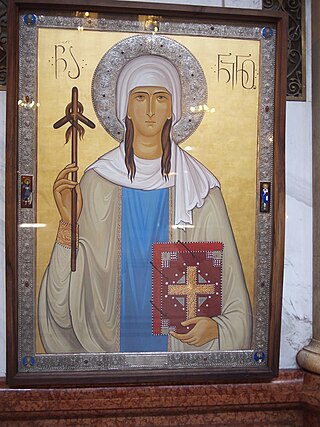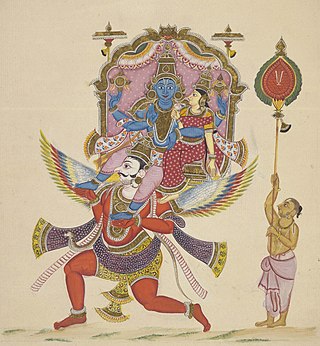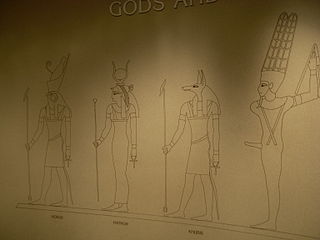Animism is the belief that objects, places, and creatures all possess a distinct spiritual essence. Animism perceives all things—animals, plants, rocks, rivers, weather systems, human handiwork, and in some cases words—as animated and alive. Animism is used in anthropology of religion as a term for the belief system of many Indigenous peoples in contrast to the relatively more recent development of organized religions. Animism focuses on the metaphysical universe; specifically, on the concept of the immaterial soul.

Raja Ram Mohan Roy was an Indian reformer who was one of the founders of the Brahmo Sabha in 1828, the precursor of the Brahmo Samaj, a social-religious reform movement in the Indian subcontinent. He was given the title of Raja by Akbar II, the Mughal emperor. His influence was apparent in the fields of politics, public administration, education and religion. He was known for his efforts to abolish the practices of sati and child marriage. Roy is considered to be the "Father of Indian Renaissance" by many historians.

Liang Fa (1789–1855), also known by other names, was the second Chinese Protestant convert and the first Chinese Protestant minister and evangelist. He was ordained by Robert Morrison, the first Protestant missionary in the Qing Empire. His tract Good Words to Admonish the Age was influential on Hong Xiuquan, who went on to lead the Taiping Rebellion.

Adoniram Judson was an American Congregationalist and later Particular Baptist missionary, who worked in Burma for almost forty years. At the age of 25, Judson was sent from North America to preach in Burma. His mission and work with Luther Rice led to the formation of the first Baptist association in America to support missionaries.

In the field of comparative religion, many scholars, academics, and religious figures have looked at the relationships between Hinduism and other religions.

The Tenggerese people are a sub-ethnic group of Javanese in eastern Java who claim to be the descendants of the Majapahit princes. Their population of roughly 100,000 is centered in 30 villages in the isolated Tengger mountains in the Bromo Tengger Semeru National Park in eastern Java.

Saint NinoEqual to the Apostles and the Enlightener of Georgia was a woman who preached Christianity in the territory of Caucasian Iberia, of what is now part of Georgia. It resulted in the Christianization of the royal house of Iberia, with the consequent Christianization of Iberia.

Goalpara district is an administrative district of the Indian state of Assam.

The Garo people are a Tibeto-Burmese ethnic group inhabiting predominantly in Northeast Indian states of Meghalaya, Assam, Tripura and Nagaland, and in some neighbouring areas of Bangladesh. Historically, the name Garo was used for a large number of different peoples living on the southern bank of Brahmaputra river, but now refers primarily to those who call themselves A•chik Mande or simply A•chik or Mande and the name "Garo" is now being used by outsiders as an exonym. They are the second-largest tribe in Meghalaya after the Khasi and comprise about a third of the local population.

Lakshmi Narayana or Lakshmi Narayan is the dual representation of the Hindu deities Vishnu, also known as Narayana, and his consort, Lakshmi, traditionally featured in their abode, Vaikuntha. The goddess of prosperity and beauty, Lakshmi, is depicted as standing next to Vishnu, who holds the Panchajanya, Kaumodaki, Padma, and the Sudarshana Chakra. Another depiction of Lakshmi-Narayana portrays Lakshmi in the service of Narayana, who reclines on the cosmic serpent Shesha, floating in the Kshira Sagara, the Ocean of Milk.

The Sinner's prayer is an evangelical Christian term referring to any prayer of repentance, prayed by individuals who feel sin in their lives and have the desire to form or renew a personal relationship with God through Jesus Christ. It is a popular prayer in evangelical circles. It is not intended as liturgical like a creed or a confiteor said or chanted within the Catholic Mass, but rather, is intended to be an act of initial conversion to Christianity; at the same time, it is roughly analogous to the Catholic Act of Contrition, though the theology behind each is markedly different, due to the intrinsically different views of salvation between Catholicism and Protestantism. While some Christians see reciting the Sinner's prayer as the moment defining one's salvation, others see it as a beginning step of one's lifelong faith journey.
The fate of the unlearned, also known as the destiny of the unevangelized, is an eschatological question about the ultimate destiny of people who have not been exposed to a particular theology or doctrine and thus have no opportunity to embrace it. The question is whether those who never hear of requirements issued through divine revelations will be punished for failure to abide by those requirements.
John Jea was an African-American writer, preacher, abolitionist and sailor, best known for his 1811 autobiography The Life, History, and Unparalleled Sufferings of John Jea, the African Preacher. Jea was enslaved from a young age, and after gaining his freedom in the 1790s, he traveled and preached widely.

Polytheism is the belief in multiple deities, which are usually assembled into a pantheon of gods and goddesses, along with their own religious sects and rituals. Polytheism is a type of theism. Within theism, it contrasts with monotheism, the belief in a singular God who is, in most cases, transcendent. In religions that accept polytheism, the different gods and goddesses may be representations of forces of nature or ancestral principles; they can be viewed either as autonomous or as aspects or emanations of a creator deity or transcendental absolute principle, which manifests immanently in nature. Polytheists do not always worship all the gods equally; they can be henotheists, specializing in the worship of one particular deity, or kathenotheists, worshiping different deities at different times.
The Council of Baptist Churches in Northeast India is a Baptist Christian denomination in North East India. It is a member of the Asia Pacific Baptist Federation. It is also a member body of the North East India Christian Council, the regional council of the National Council of Churches in India. The Council of Baptist Churches in Northeast India has six Baptist conventions, 1,431,417 members in 8,245 churches. Its presently led by Mr. Norbu Lama as President and Rev. Prof. Akheto Sema as General Secretary.
The predominant religion of Nagaland is Christianity. The state's population is 1,978,502, as of 2011, out of which 87.93% are Christians. The 2011 census recorded the state's Christian population at 1,745,181, making it, with Meghalaya, Arunachal Pradesh, and Mizoram as the four Christian-majority states in India. The state has a very high church attendance rate in both urban and rural areas. Huge churches dominate the skylines of Kohima, Chümoukedima, Dimapur and Mokokchung.
Evangelization of Meghalaya began in the 19th century under the British era. In the 1830s, American Baptist Foreign Missionary Society had become active in Northeast to evangelize indigenous tribes to Christianity. Later, they were offered to expand and reach into Sohra Meghalaya, but they lacked the resources to do so and declined. Welsh Presbyterian Mission took the offer and they began work at Sohra mission field. By the early 1900s, other Protestant denominations of Christianity were active in Meghalaya. The outbreak of World Wars forced the preachers to return home to Europe and America. It is during this period that Catholicism took root in Meghalaya and neighbouring region. Currently, Catholics, Presbyterians and Baptists are three most common Christian denominations found in Meghalaya.
The Boro Baptist Church Association (BBCA) is a Baptist Christian denomination in the state of Assam. Established in 1927 by the American Baptist Missionaries and later nurtured by Australian Baptist Missionary Society ABMS. It consists of 219 churches and fellowships with a total population 40,000 above and 18,000 plus baptized members. The BBCA has its headquarters in the Tukrajhar Baptist Mission compound in Chirang district of Bodoland, Assam. BBCA is working in partnership with Baptist World Alliance, Global Interaction (Australia), Asia Pacific Baptist Federation, Seva Bharat, Missionaries Upholders Trust, Inspire India and Tura Baptist Church in Church Plantation and community development ventures to bring transformation in the lives of people, spiritually and economically. The motto of the church is "Arise and Build" Nehemiah 2:18
Mata-parīkṣā is a Sanskrit-language text by the Christian author John Muir. It criticizes Hinduism, and portrays Christianity as the true faith. It was written in British India in 1839, and revised twice.
Nehemiah Goreh (1825-1895), born Nilakantha Gore, was a Hindu convert to Christianity in British India. As a Hindu apologist, he wrote the Sanskrit-language text Śāstra-tattva-vinirṇaya and a Hindi-language synopsis of it, defending Hinduism against Christian missionaries. Later, he converted to Christianity, and wrote texts critical of Hinduism, including Shad-darshana Darpana.









